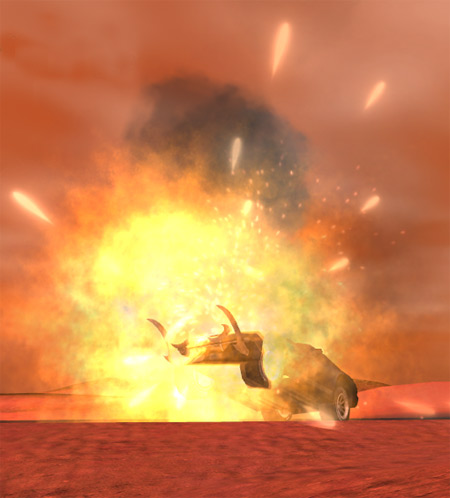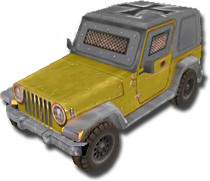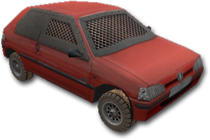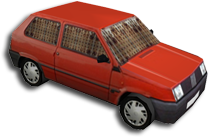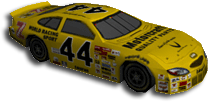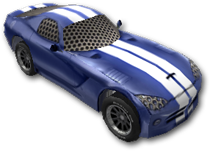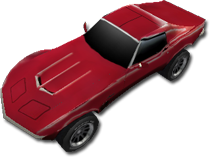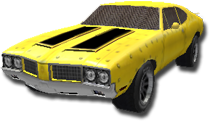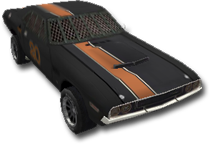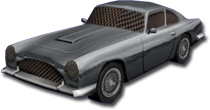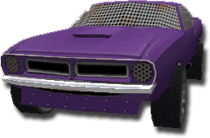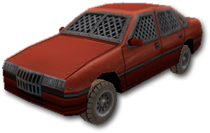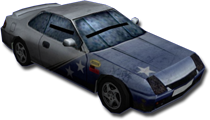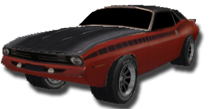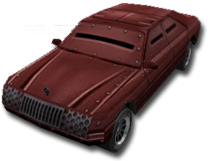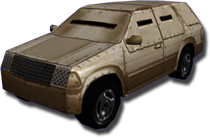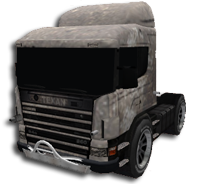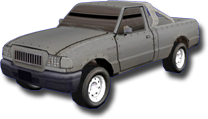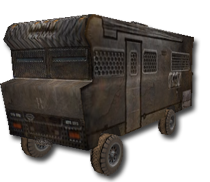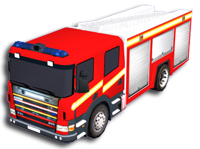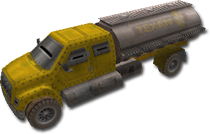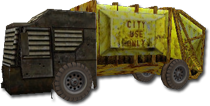Chassis - this determines not only the capacity of components/goods/characters the vehicle can carry, but also its maximum engine size and its performance. The weight of a chassis is important, and it has a direct impact on the weight of armour. The handling of a vehicle is affected by its chassis centre of gravity, suspension, and wheel characteristics. Some vehicles are four-wheel drive, and this is also determined by the chassis. Offroad vehicles such as landrunners and buggies tend to handle better than regular vehicles on dirt tracks. Each type of vehicle also has an inherent toughness factor, which affects the performance of installed armour: heavily built vehicles such as landrunners have high toughness, whereas lighter, racing vehicles such as the DeVille have low toughness.
Click here for more specific Chassis Details
Engine - how much acceleration a vehicle has, and its maximum speed, are functions of its engine power as well as its weight and wheel/tyre characteristics. V8 engines have a better power-to-weight ratio than regular engines. A chassis can have an engine that is up to 20% bigger than its configured capacity, but this engine will be exposed and more likely to take damage. A damaged engine loses some of its power, and may catch fire and even explode if badly damaged.
 |
Weapons - vehicle-mounted weapons include dropped weapons (mines, spikes, oil), missile weapons (guns, flamethrowers, rockets), concealment weapons (smokescreen, paintcloud), and melee weapons (rams, spikes). The chance of hitting with a missile weapon depends on the following factors: |
- Each weapon type has a basic accuracy at short range
- Distance/range modifier (different per-weapon type): a flamethrower for example is very easy to hit with at point-blank range, difficult to hit with at short range, and impossible beyond that, whereas a mounted rifle is quite hard to hit with at short range but this doesn't degrade much at further distances
- The gunnery or large-guns skill of the gunner (as appropriate to weapon), multiplied by their activity level
- Continuous fire bonus: for each continuous round that the same weapon has fired on the same target
- Continuous targeting bonus: for each continuous round that the same weapon has been targeted at (and is able to see) the target vehicle
- Relative speed of the vehicles
- Any smoke/paintcloud in the line of sight (affects lasers much more than other weapons)
- Damage taken by the firing vehicle in the last 2 game seconds
- If gunner is also driving, they're less accurate than a dedicated gunner. More so if the steering wheel is heavily turned
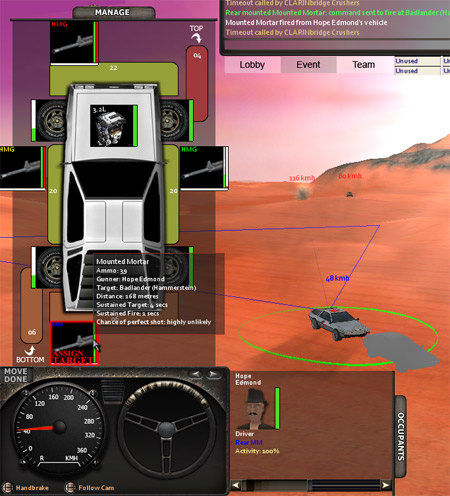
Click here to see a table of weapon types
Tyres - different types of tyres are of different strengths and have different handling characteristics. Note that the chassis also has an impact on tyre handling, since each chassis has different wheel dimensions. Tyres can be damaged by impacts, excessive skidding, or weapon fire. A damaged tyre loses some of its grip.
Fueltank - the size of your fueltank is only important for long-distance travel, and is ignored in races/combats.
Terrain Types
Each type of terrain (mud, sand, tarmac, rocks, etc.) has different characterstics in terms of: slippiness; dustiness; maximum wheel speed; damage caused when you crash; bounciness; softness. These characteristics are also affected by your chassis and/or tyres. Certain chassis types for example are more affected by slippy terrain, and heavy vehicles are more affected by soft terrain.
Crashing and Damage
For damage and crashing effects, the vehicles in Darkwind are considered to have 6 areas: front; rear; left; right; top; bottom. Each of these areas can take armour. The weight of one unit of armour is a function of the chassis weight of the vehicle, and the cost is a function of the chassis cost. Armour comes in 3 grades (A, B, and C). Grade A (the best) costs 4 times as much as B, but only weighs half as much. Grade C (the worst) costs half as much as B, and weighs twice as much.
Armour is of course your first line of defence. Incoming damage will generally impact the armour first, and typically some (but not all) of the armour will be destroyed. Even a hefty impact which causes more damage than the armour can take will not destroy the armour straight away. Any damage that the armour cannot stop is applied to the innards of the car. Depending on the side of the impact, some components may take the damage first: a frontal hit for example will usually hit the engine before the driver.

Sometimes a vehicle's chassis may be damaged. This affects its handling quite significantly, and also compromises its ability to carry armour effectively. Fixing a damaged chassis may be expensive.
A vehicle may also catch fire (more likely if it is hit by a flaming weapon, or if it is loaded up with rockets or flamethrowers). A vehicle that is on fire takes damage each turn until either the fire goes out or the vehicle explodes.
